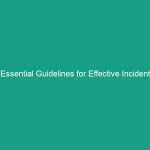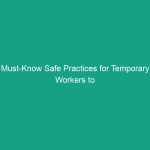Good Morning Team!
Today, we are diving into an essential topic that affects many of us during the colder months: Essential Guidelines for Working in Cold Weather: Stay Safe and Healthy. As temperatures drop, it’s crucial to understand the risks associated with working in cold conditions and how we can mitigate them. This discussion aims to equip you with the knowledge and practices to keep you safe and healthy while performing your duties.
Understanding Cold Weather Hazards
Cold weather can present various Hazards, from hypothermia to frostbite, which can severely impact our health and Safety. Understanding these risks is vital for maintaining a safe work Environment.
Hypothermia occurs when the body loses heat faster than it can produce it, leading to dangerously low body temperatures. Symptoms include shivering, confusion, and fatigue. Frostbite, on the other hand, is the freezing of skin and underlying tissues, often affecting fingers, toes, and the face. It’s essential to recognize that these conditions can happen even in temperatures above freezing, especially when wind chill is a factor.
One common misconception is that you can only suffer from cold-related illnesses when it’s extremely cold outside. However, prolonged exposure to chilly winds and wet conditions can lead to serious health issues, even at mild temperatures. This is why it’s crucial to remain vigilant and prepared.
Key Hazards, Risks, and Safety Considerations
The hazards associated with cold weather include:
- Increased Slips and Falls: Icy surfaces can pose a significant risk for slips and falls, leading to injuries.
- Reduced Dexterity: Cold temperatures can cause your hands to become numb, making it difficult to handle tools and equipment safely.
- Dehydration: Cold weather can mask signs of dehydration, making it easy to overlook your body’s needs.
- Impaired Judgment: Cold exposure can affect mental clarity, leading to poor decision-making on the job site.
Ignoring these safety protocols can result in serious injuries and even fatalities. Therefore, it’s imperative to recognize these risks and take proactive measures to prevent them.
Best Practices, Procedures, & Actionable Advice
To stay safe and healthy while working in cold weather, follow these Best Practices:
- Dress in Layers: Wear multiple layers of clothing to trap body heat. Start with a moisture-wicking base layer, add insulating layers, and finish with a waterproof outer layer.
- Protect Extremities: Wear insulated gloves, warm hats, and thermal socks. Remember that the majority of heat loss occurs through the head, so a good hat is essential.
- Stay Dry: Wet clothing can significantly increase the risk of hypothermia. If you get wet, change into dry clothes as soon as possible.
- Take Breaks: Schedule regular breaks in warm areas to allow your body to recover from the cold.
- Stay Hydrated: Drink plenty of fluids, even if you don’t feel thirsty. Warm drinks can help maintain your core temperature.
- Be Aware of Symptoms: Familiarize yourself with the signs of hypothermia and frostbite. If you or a co-worker shows symptoms, seek help immediately.
Real-life incidents can serve as powerful reminders. For example, a construction worker in our area experienced frostbite due to inadequate clothing during a winter storm. This situation could have been prevented by adhering to proper cold weather protocols. Let’s learn from these experiences and prioritize our safety.
Regulations, Standards, and Compliance
Compliance with safety Regulations is critical in ensuring a safe work environment. OSHA has established guidelines for working in cold weather, emphasizing the need for appropriate clothing, training, and monitoring of employees in cold conditions.
Adhering to these regulations not only protects you but also ensures the overall safety of your team. Familiarize yourself with these Standards and incorporate them into your daily work routines.
Employee Engagement & Discussion
Now, let’s open the floor for discussion. What safety challenges have you encountered related to working in cold weather? Have you experienced any close calls or learned any tips that you can share with the team? Your input is invaluable in fostering a culture of safety and awareness.
Conclusion & Key Takeaways
In conclusion, working in cold weather presents unique challenges that require our attention and action. Remember the following key points:
- Understand the risks associated with cold exposure.
- Follow Best Practices for dressing, hydration, and awareness of symptoms.
- Stay informed about safety regulations and compliance.
By applying these essential guidelines, we can ensure a safer and healthier work environment for everyone. Thank you for your attention and commitment to safety. Let’s work together to stay safe this winter!


